In 2013, Bjoern Mayer explained to us the work of Pixomondo on OBLIVION. He then took care of the effects of projects such as THE HUNGER GAMES: MOCKINGJAY PART 1, MARCO POLO, TRUE DETECTIVE and THE SHANNARA CHRONICLES.
How did you get involved on this show?
Executive Producer Gloria Borders and VFX Supervisor Jaz Nannini approached me at the end of 2015 to come on board to help with the large amount of work on ‘xXx3‘.
How was the collaboration with director D.J. Caruso?
D.J. is a seasoned director and he did a lot of stunt and visual effects heavy movies before. He is a very nice guy and understands the possibilities and needs of the visual effects department very well. Also Jaz and D.J. have known each other for years, therefore there was a solid basis of trust already and it was straightforward to get his ear to talk about our visual effects sequences and pitch ideas how to achieve them to fulfill his vision of the movie.
What was his approach and expectations about the visual effects?
Of course D.J. wanted the visual effects to be as realistic and invisible as possible. Visual effects should help to transport and support the story and not be the story itself. There was a broad scope of difficulty levels of visual effects in ‘xXx3’ – from more simple paint outs of wires to motorbikes riding full-CG ocean waves.
How did you organize the work with VFX Supervisor Jaz Nannini?
During principal photography our work was mostly divided so that Jaz oversaw 1st unit and I was with 2nd unit most of the time. In post production we sat together reviewing shots at Paramount and presenting work to D.J. who was in editorial just across the hallway, which helped getting immediate feedback.
Can you tell us how you choose the VFX vendors and how did you split the work amongst these vendors?
We spread out the work mostly by sequence, although we had a couple of shared shots that made it necessary to transfer assets or pre-comps between vendors. We tried to award the shots to vendors that did similar work on other shows before to make sure the wheel hasn’t to be reinvented again to save time in our post production schedule. Our visual effects producer Julia Neighly took on the task to keep the vendors in line and not to exceed schedule and budget while Jaz and I could concentrate on creative and technical aspects of the progression of shots.
We felt very comfortable giving Pixomondo the biggest chunk of work since I worked there for ten years and know most of the supervisors and artists. Due to Pixomondo’s setup with multiple facilities around the world it is possible for them to push through a lot of shots in a short amount of time – it’s like you get multiple vendors under one roof. Also very beneficiary was that Pixomondo has an office in Toronto where we shot most of the movie on stage. It was therefore pretty easy to set up reviews in their office with Pixomondo’s supervisor Bojan Zoric or have him come over to the stage and have him help out on VFX-heavy shooting days.
Moving Picture Company Vancouver was an easy pick since their supervisor Kevin Hahn just finished THE FINEST HOURS for Disney that features a lot of rolling ocean waves. He and his team brought a tremendous amount of expertise and know-how to the table and saved us a lot of time developing CG-water. MPC also worked on a lot of head replacements for our main actors in case the stunts were too dangerous or their schedule didn’t work out.
With their work on GRAVITY, Rising Sun Pictures were a great choice for the falling satellites and all other space shots. Rising Sun’s supervisor Adam Paschke also oversaw a number of shots involving the C-17 airplane and some digital matte paintings and set extensions.
Crafty Apes and Lola supported us in taking on a large number of paint outs, muzzle flashes and beauty fixes.
The opening sequence takes place in space. How was created this environment and all the satellites?
Rising Sun Pictures created this very long full-CG opening sequence by putting together huge setups of thousands of satellites spinning around earth to generate the look of a busy orbit that D.J. wanted.
Can you tell us more about the falling satellite?
The falling satellite and all glowing and ablation effects were inspired by the re-entry sequence of GRAVITY that Rising Sun Pictures also worked on. Adam Paschke could fall back on their research and development and present us a look that got locked down by the director pretty quickly.
Donnie Yen attacks a conference room by jumping from the roof. How was created this city environment and skyline?
We build parts of the roof on stage in front of a greenscreen at about 30ft and had a stuntman on a wire jump off it into a green pillow. The camera operator was wired to the same rig and jumped right behind the stuntman. As soon as the stuntman left the roof-set-piece and was completely in front of green we were able to make him jump a little further and fall lower to hit the window of the conference room three stories down. The street level was a mixture of a lot of full-CG elements and digital matte-paintings built by Pixomondo. The rest of the skyline was built out of pictures shot in New York City and some of Toronto’s cityscape.
The movie is full of crazy stunts. How did you approach them and work with the stunt team?
Strangely enough the zero-gravity sequence turned out to need more work than we thought since there were so many stunt wires visible, dangling in front of faces and casting shadows and reflections. The devil’s always in the details.
Can you tell us more about the ski sequence in the jungle and then the long board sequence?
Those sequences were shot with 2nd unit in the Dominican Republic. The filmmakers found these extreme sports people that had internet fame to do these things. They built wooden ramps in the jungle, covered them with astro turf and shredded ice and hurled themselves down the slope. MPC helped out by painting out the helmets, adding Vin Diesel’s head and paint out several safety related pads or wires.
Later in the movie, a crazy chase sequence happens on the ocean. Can you tell us more about this sequence?
Riding the ocean on motorbikes was also derived from some extreme sports athletes that actually tried to do that once. In the seven weeks of 2nd unit principal photography in the Dominican Republic the stunt department was relentlessly rehearsing and tinkering on their bikes to make it work. They had great success on the calmer waters of the river leading to the ocean and we shot it from camera boats and drones but on the ocean the water was just too rough and choppy for the motorbikes.
Some shots and jumps over the waves we could achieve by mounting the top of the motorbike to a jet ski, racing over the wave and replacing the jet ski after with a CG-version of the motorbikes. For the shots with the large rolling waves MPC created full-CG water-environment and digital doubles since there was no way to get the motorbikes to ride in the wave safely.
The team is using a C17 to travel around the world. Can you explain in details about its creation?
Rising Sun and Pixomondo generated the shared asset of the C-17. Rising Sun worked on most of the shots outside of the C-17, Pixomondo worked on the CG-interior, ceiling extensions and the explosion at the end.
How did you created the zero-g sequence in the C17?
The stunt team cut off parts of the ceiling of the interior set-piece of the C-17 and hung the stunt people and actors on wires. Pixomondo had to add back in the CG-ceiling, paint out the wires and add more floating debris.
How was filmed and created the long shot showing Xander escaping the C17 before it exploded?
The cockpit and the data center were one set-piece located on one stage whereas the cargo bay was located on another stage. It wasn’t possible to have both parts of the airplane on one stage since the airplane is simply too big to fit. To achieve the shot were Xander falls through the complete airplane the stunt team hung him and a cable cam on a wire and pulled him 130ft from the cockpit/data center-set out through the door of the cargo bay where a full-CG cargo bay took over. As soon as the cargo bay around Xander gets destroyed, Pixomondo blended Xander to digital double to get more freedom in camera movement and distance.
Which sequence was the most complicated to created and why?
The three sequences: riding bikes on the ocean, exploding the C-17 and the fight on the streets in between traffic were definitely the most complex.
To make the water and the bikes riding over the water look believable was very difficult and took a long time.
The exploding C-17 had literally thousands of parts flying around and of course needed to be in an early trailer already.
The fight in traffic had a lot of layering of elements of moving traffic and camera that needed to stitched together and cleaned up a lot.
Was there a shot or a sequence that prevented you from sleep?
When we were shooting a sequence in Hamilton, Ontario I got food poisoning – that kept me from sleeping.
What do you keep from this experience?
A lot of new friends I made on and off set, fantastic images and memories from the Dominican Republic and Toronto.
How long have you worked on this show?
About 12 months.
What’s the VFX shots count?
1’265.
What was the size of your team?
With all vendors combined I’m sure it is in the hundreds, but I don’t know exactly.
What is your next project?
Unfortunately I’m not allowed to tell.
A big thanks for your time.
© Vincent Frei – The Art of VFX – 2017


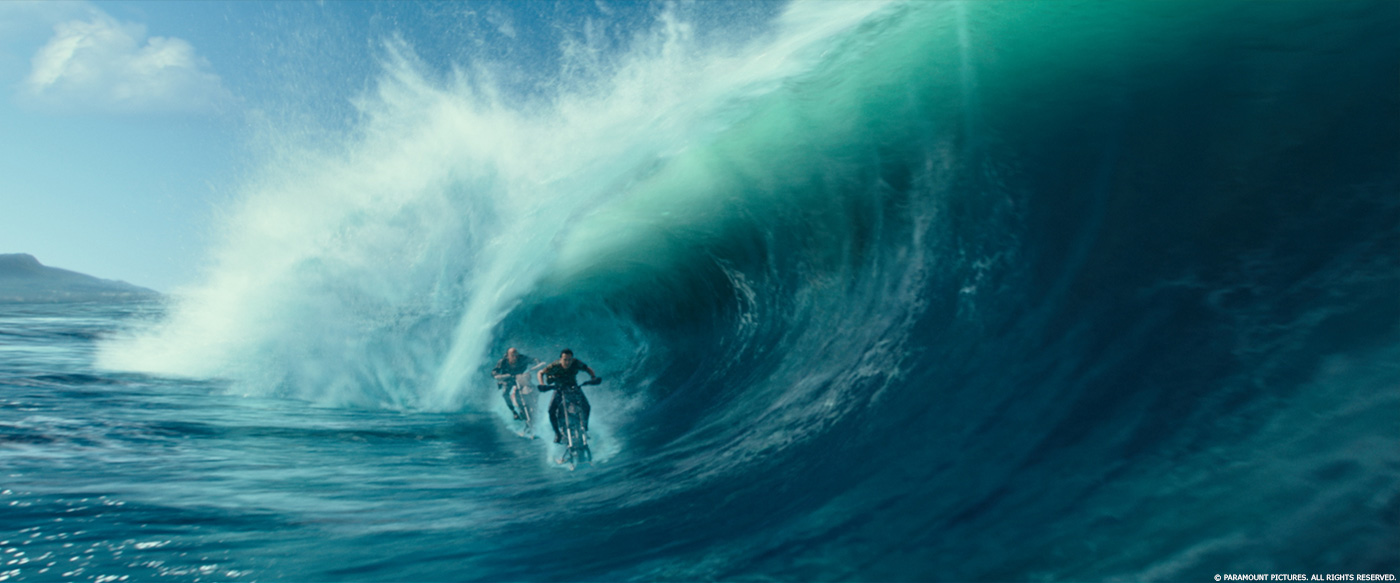
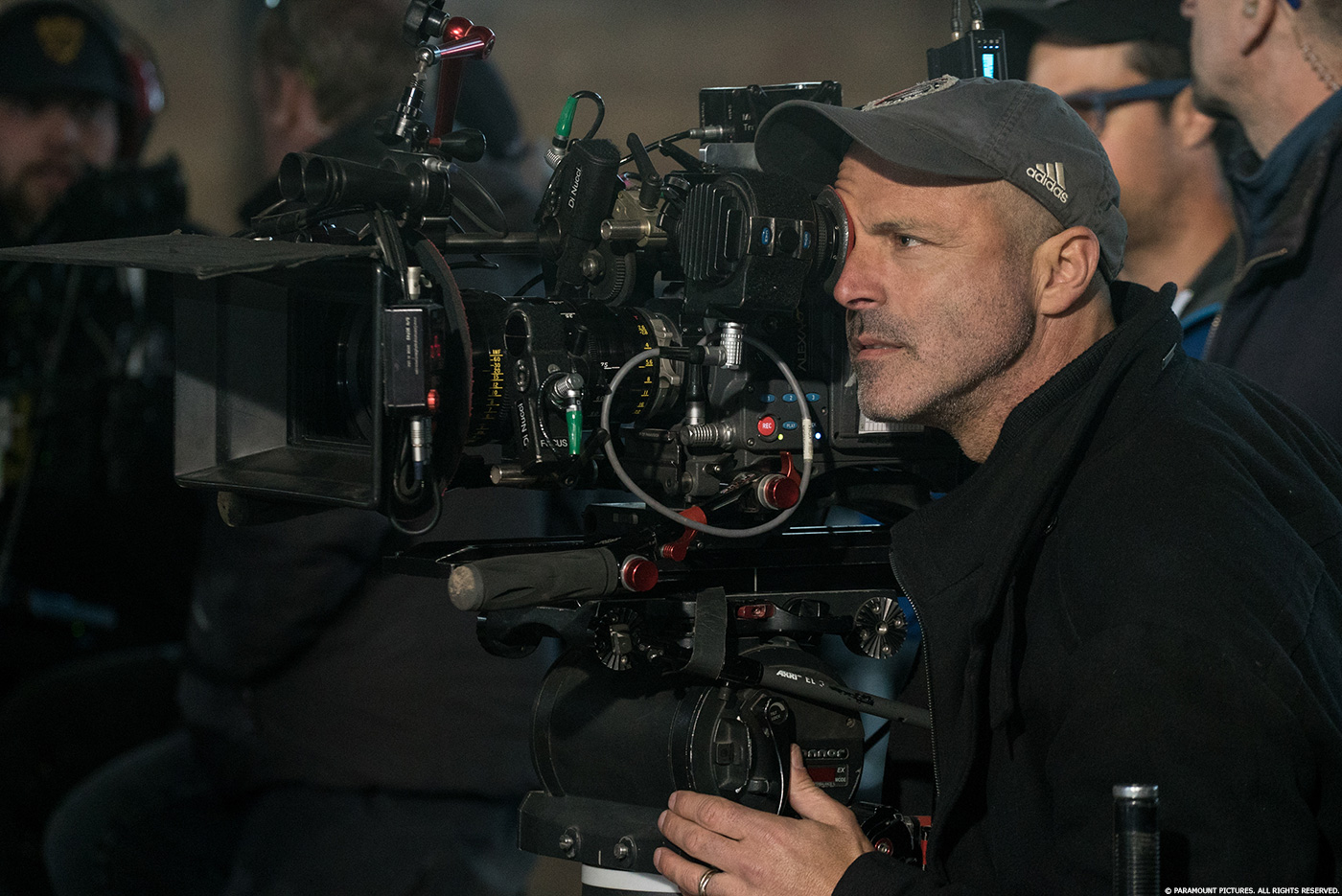
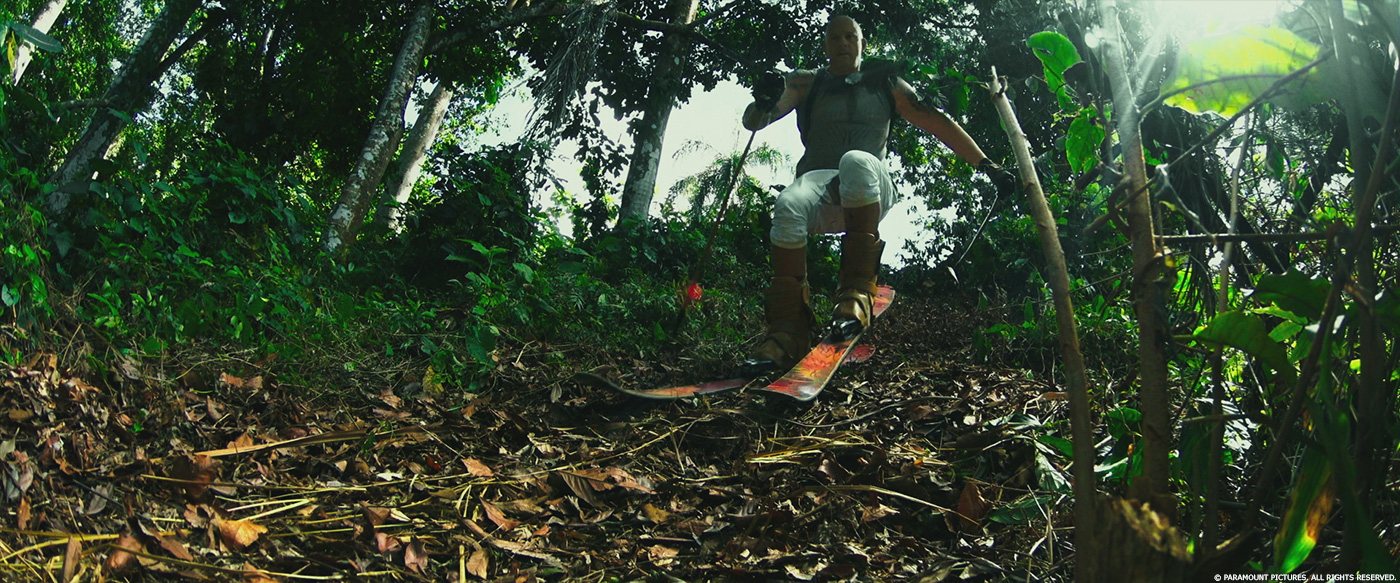
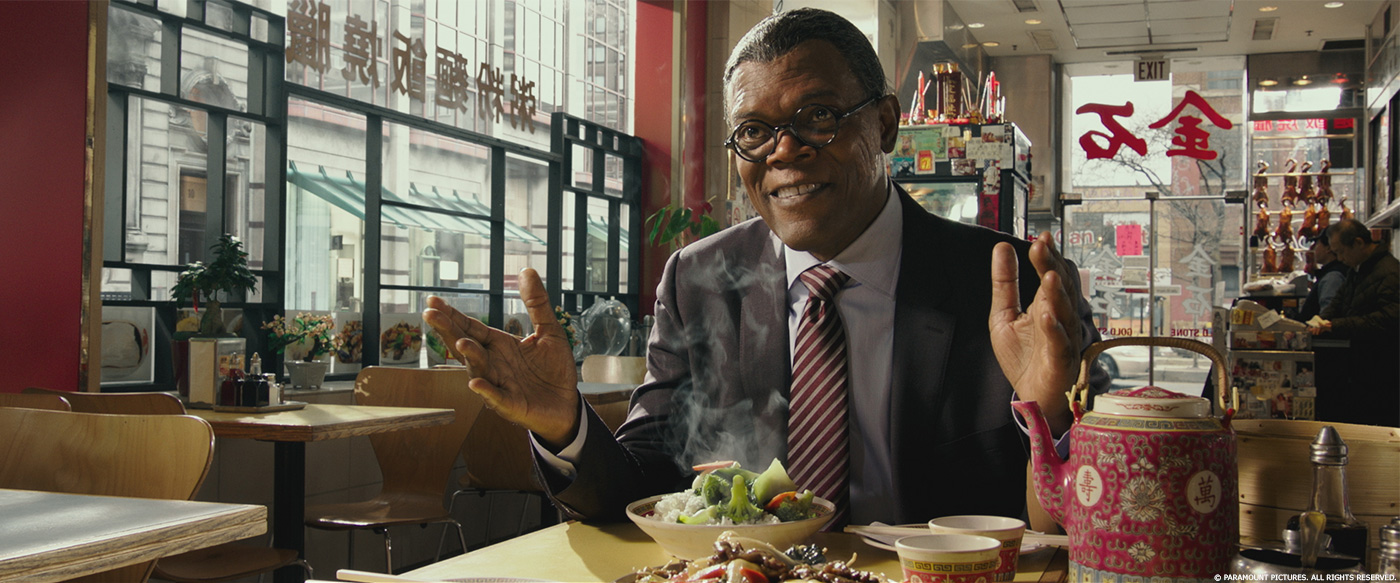
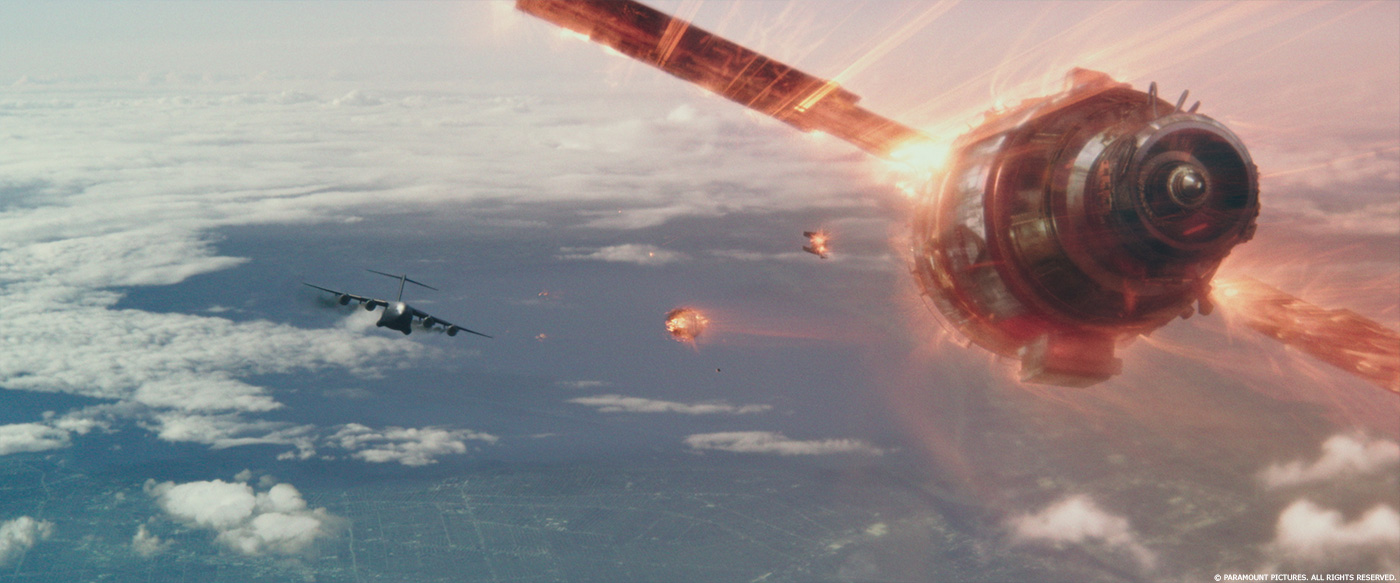

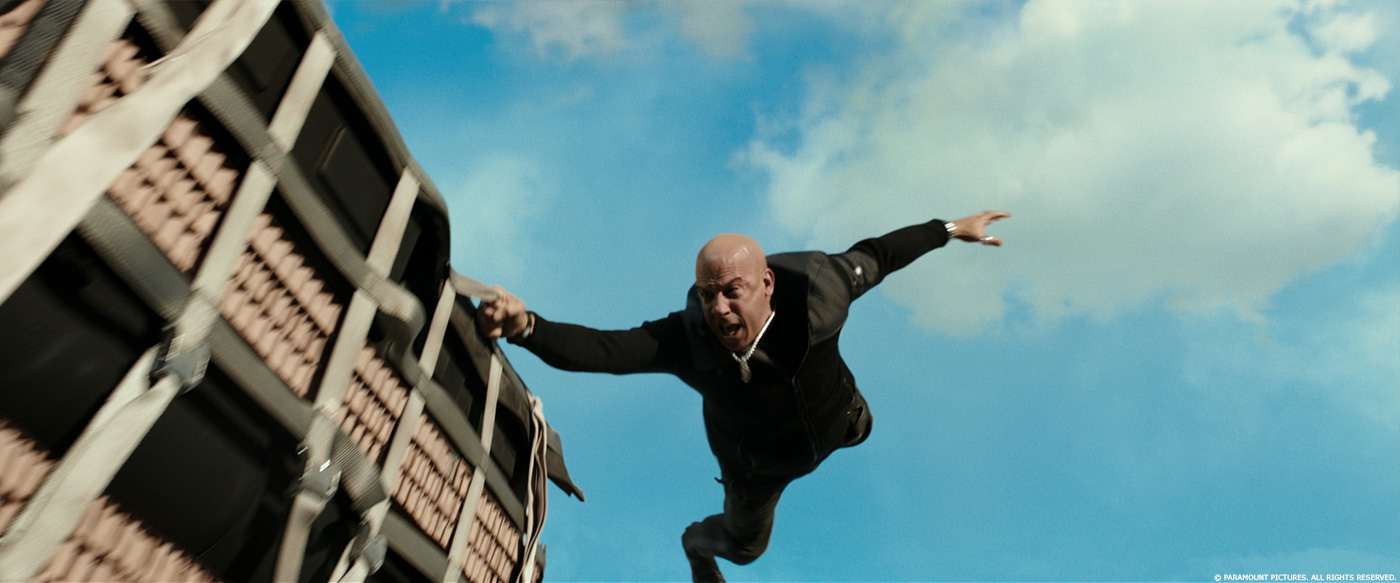
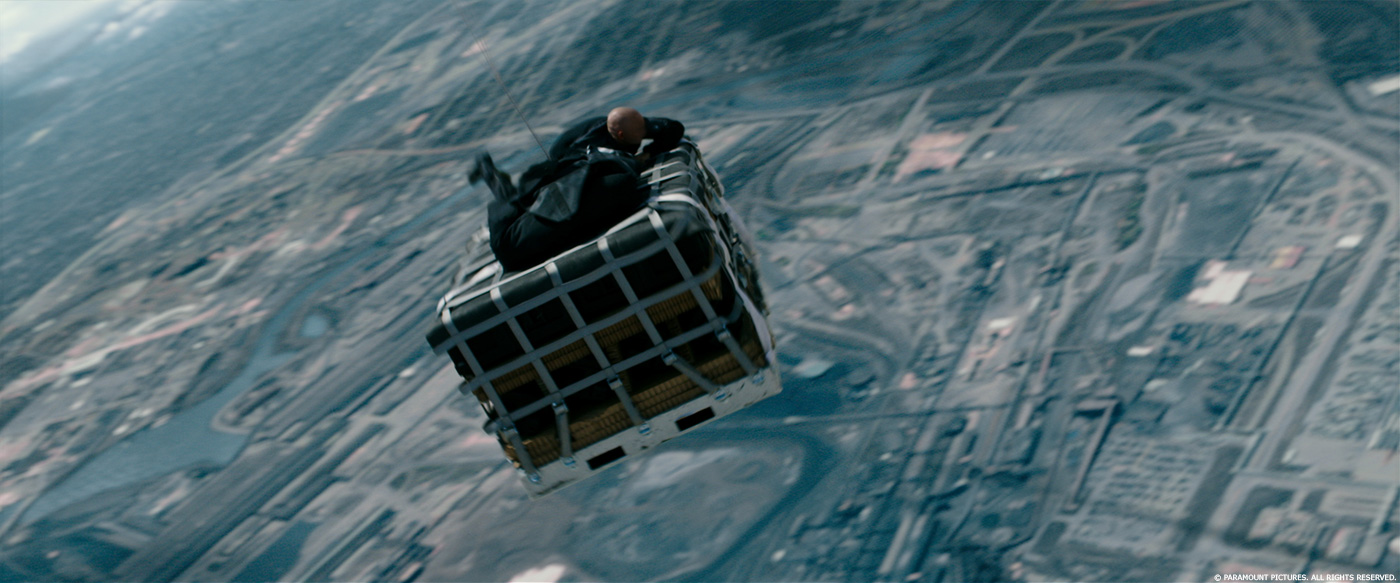
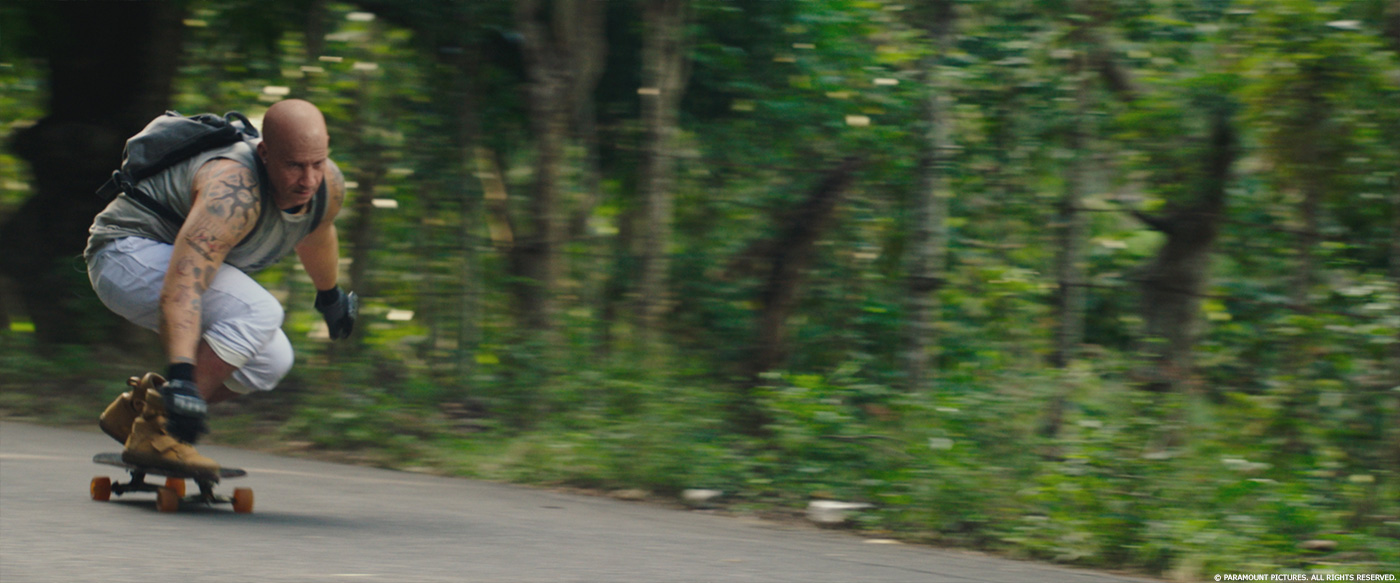
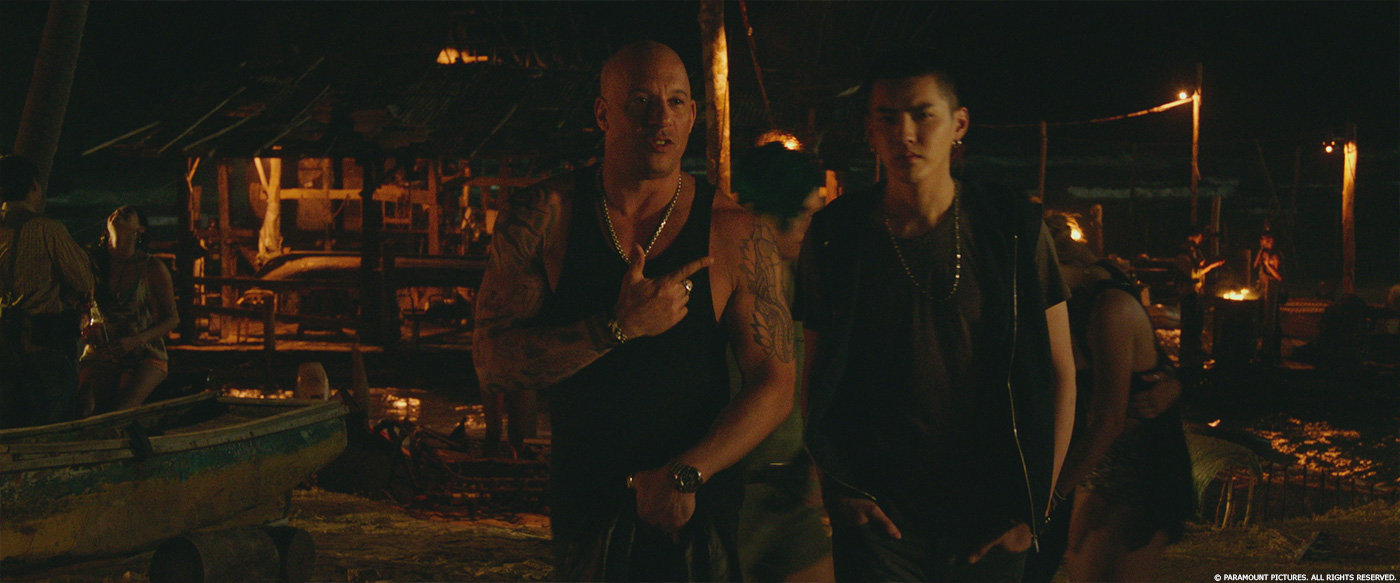
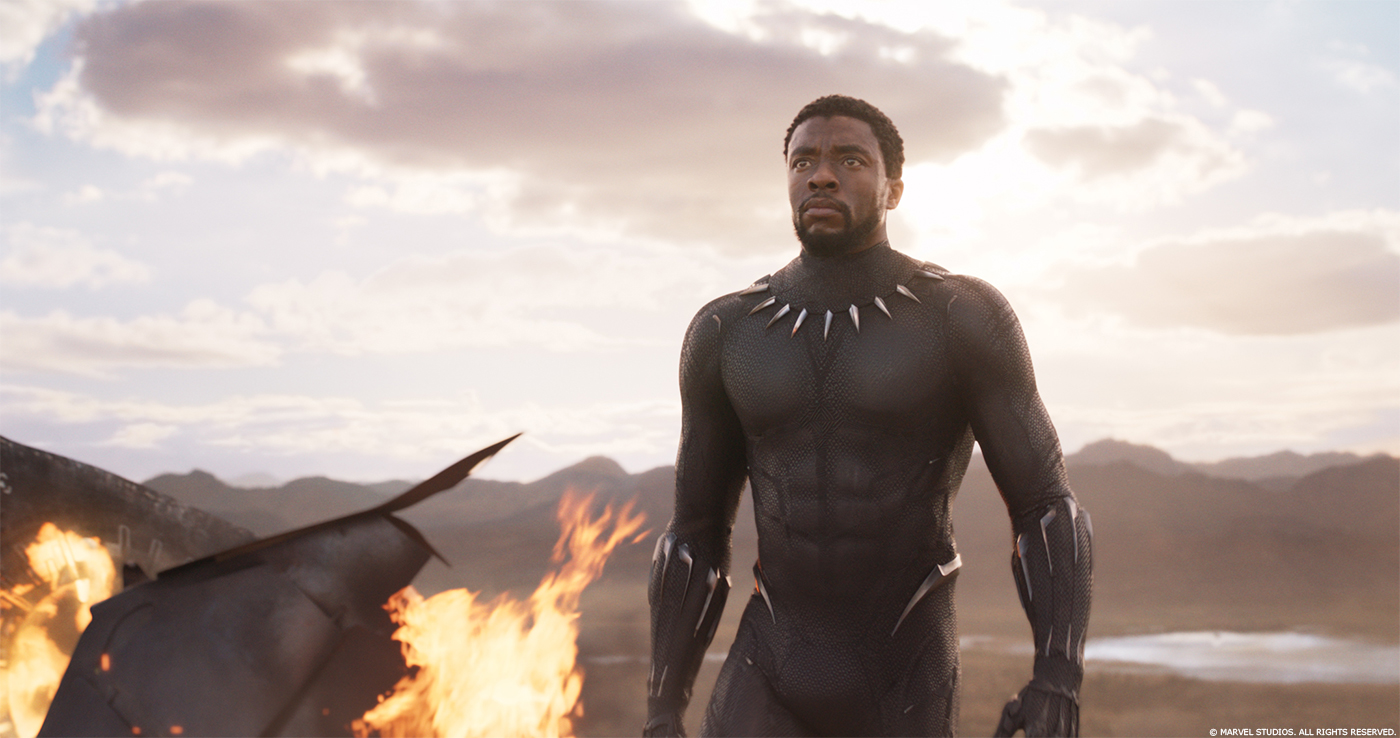
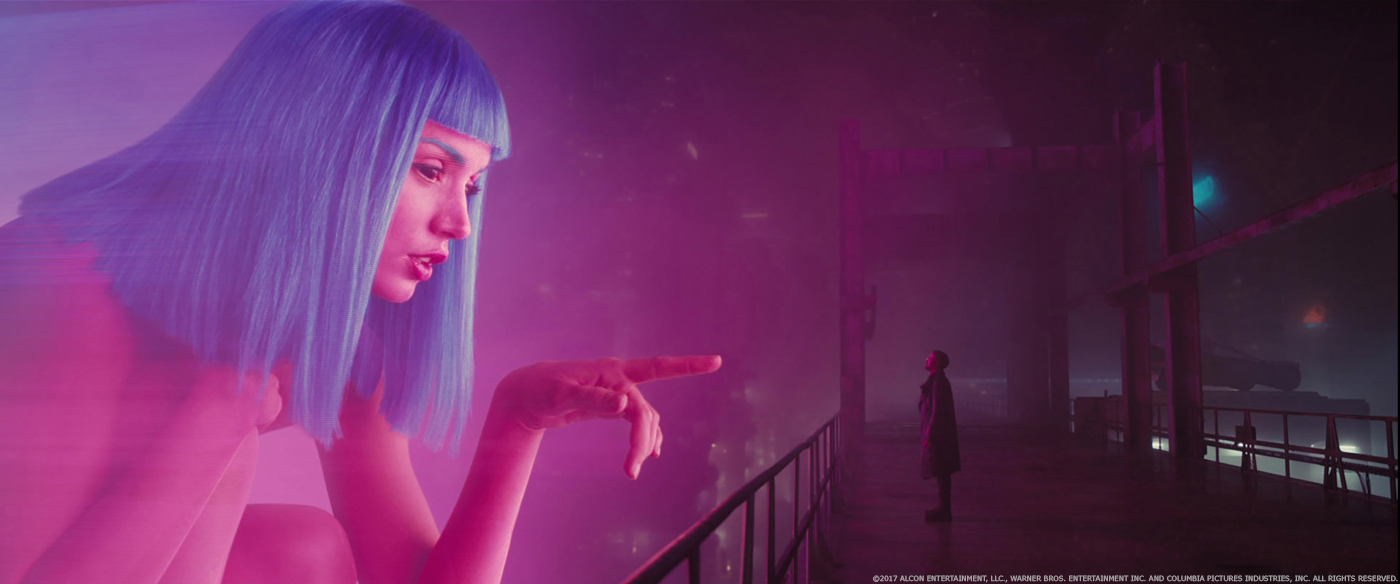
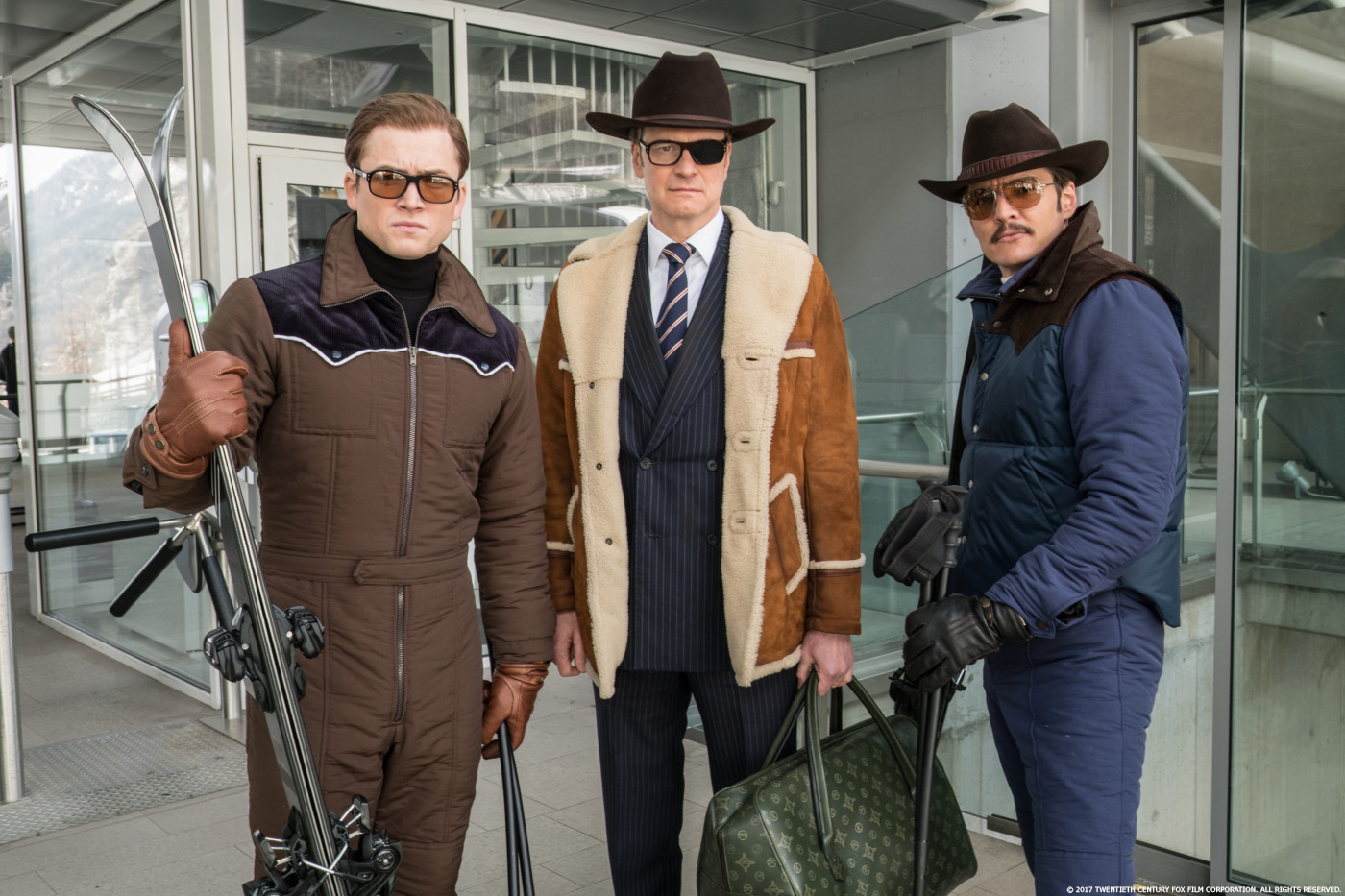
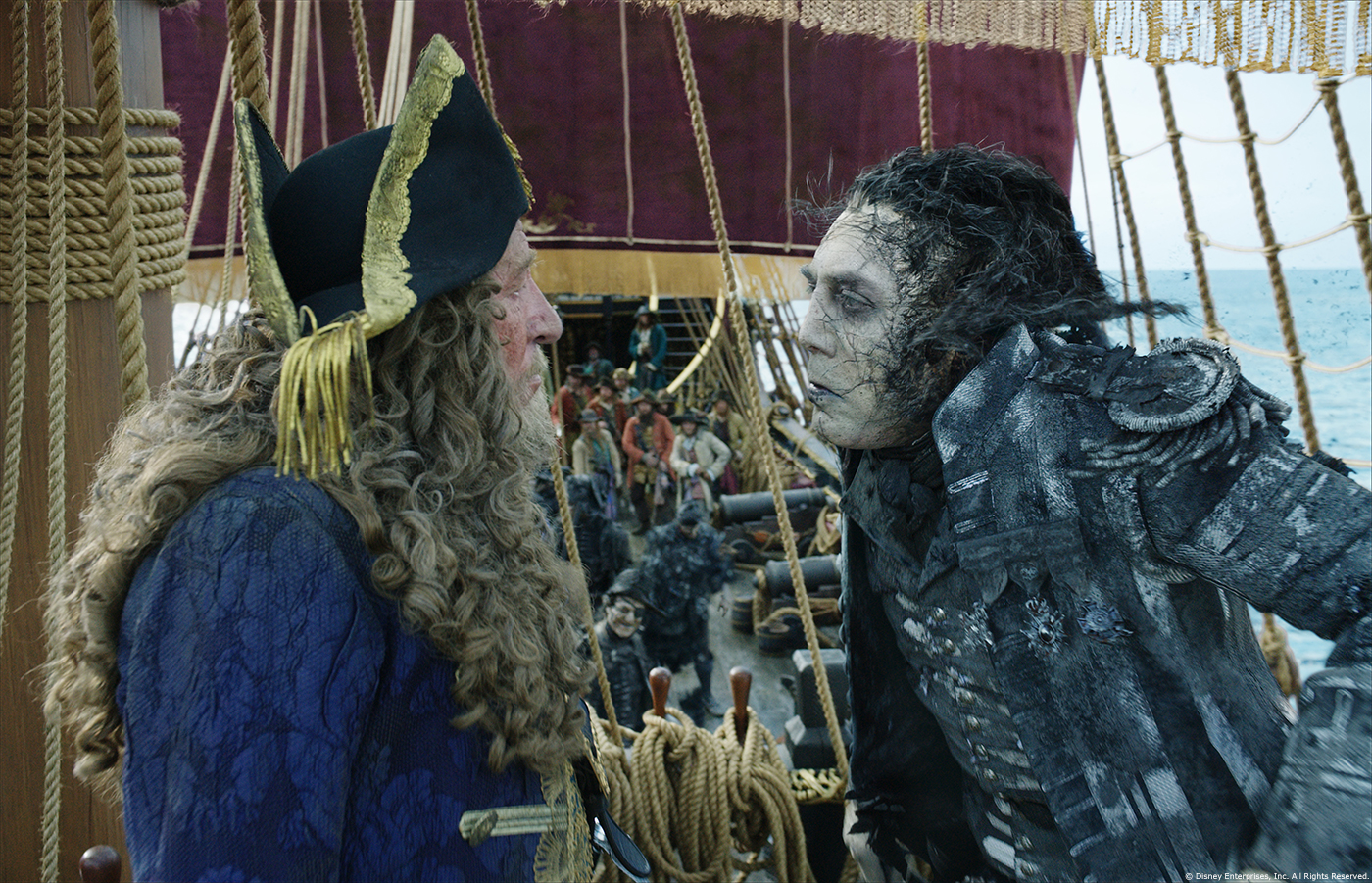
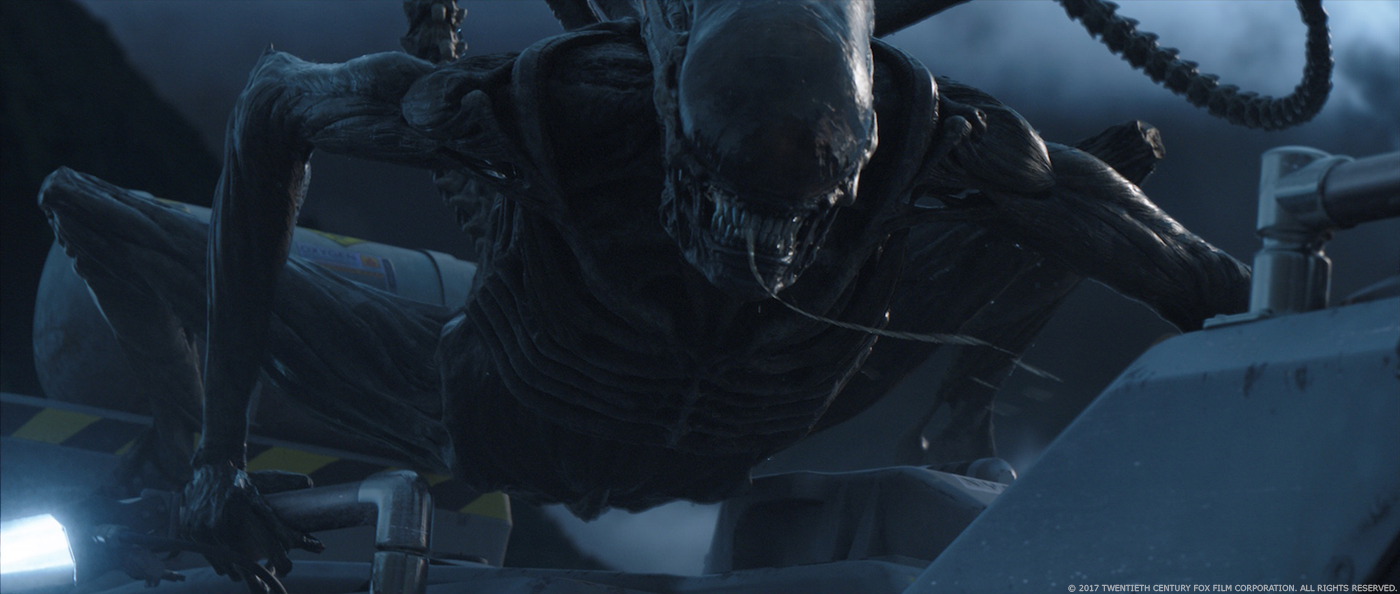
Hm. That ocean wave shot looks terrible.